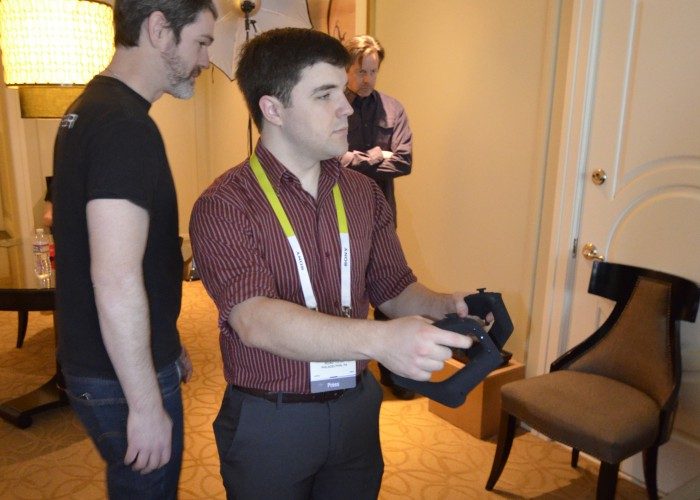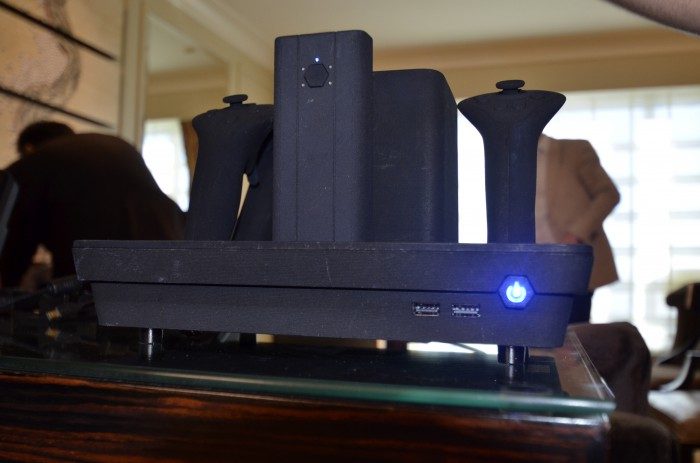Sixense, creators of the tech behind the Razer Hydra, and the upcoming STEM motion controller, gave us a demo showing how STEM’s new distortion correction method can make a huge difference in environments with magnetic distortion.
In the early days of the first Oculus Rift development kit, the DK1, it was easy to find a fun VR demo that would make use of the Razer Hydra, an accurate motion input controller that uses magnetic tracking technology. And while the Hydra gets less use these days as developers wait excitedly for the next-gen STEM system, it seemed like the Hydra was either loved or hated depending upon who you talked to.
See Also: VRClay Beta Hands-on, the 3D Sculpting Software for VR
For every person who, like me, was in the ‘love’ camp on account of the unit’s impressively accurate, drift-free tracking, it seemed there would be someone who complained of inaccuracies. The issue, in many cases it seems, was blamed on magnetic interference from surrounding electrical and metallic objects. Such objects can distort the magnetic field employed by magnetic tracking devices like the Hydra.
With the forthcoming STEM system, Sixense has made an upgrade that appears to cut through distortion like a hot knife through butter. Sixense’s Danny Woodall showed us the difference in tracking with and without distortion correction.
From what I understand, thanks to the addition of an on-board IMU, the controller consistently knows the gravity vector (which direction is down). This gives it a reference point to compare against. When the magnetic tracking suggests that the unit is tilting up or down (in this case, due to magnetic distortion) the IMU functions as a double check. When the two agree, tilting gets the green light. When they disagree, the known downward direction from the IMU is used to as a reference to compensate.
Regarding shipping, Sixense’s Danny Woodall says that “by the end of the month we should be shipping out all of the prototype units. And then right after that we’ll be starting to push out all the Kickstarter units to everyone else that’s pledged. I think probably early March hopefully most people will start having systems show up at their doorsteps.”
We’ll be looking forward to seeing how STEM’s distortion correction works across a number of varying environments as Kickstarter backers start to get their hands on the system.








